Housing
More affordable housing in the works
March 7, 2013
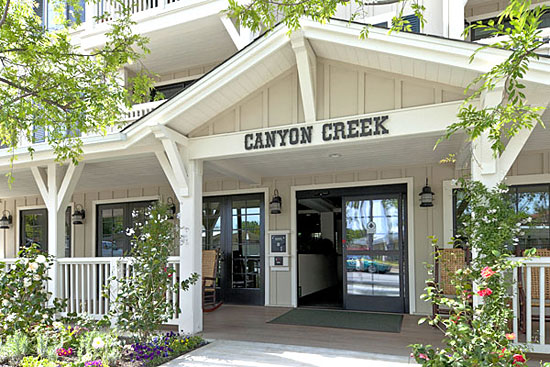
With affordable housing in short supply, the Canyon Creek development in Calabasas helps meet a growing need.
In a compromise intended to bolster the county’s supply of affordable housing even in times of budget uncertainty, the Board of Supervisors this week unanimously voted to set aside $15 million to build low- and moderate-income units.
At least half of the money will go to housing for the homeless and people with special needs.
Affordable housing projects across the county have been in limbo since the state moved to dissolve local redevelopment agencies last year. Since then, L.A. County has received some $75 million in unused affordable housing funds from the dissolution of the agencies.
A motion by Supervisors Gloria Molina and Mark Ridley-Thomas initially proposed that the entire $75 million be placed in an affordable housing trust fund to be used to fund projects over the next five years.
However, with looming uncertainty about coming demands on the county’s 2013-14 budget, Supervisor Zev Yaroslavsky offered a substitute motion to allocate $15 million now and decide what to do with the rest of the funds during the upcoming budget process. He said he supports devoting the funds to affordable housing in future years if the budget allows for it. The board approved the motion 5-0.
Before the vote, the board heard from a series of affordable housing advocates.
“Every night, over 8,000 homeless veterans sleep on L.A.streets, under bridges, in parks and in encampments. Nearly 2,500 of these homeless men and women have been on the streets for a year or more, and many struggle with PTSD, addictions to drug and alcohol, and chronic health conditions like hepatitis, heart disease, diabetes and HIV. The number of women veterans ending up on our streets is increasing at an alarming rate,” one of the speakers, Gigi Szabo of New Directions, told the supervisors. “Please help us create more housing for veterans by making sure that the money goes to affordable housing development.”
Maura Johnson of the Hollywood Community Housing Corporation added: “We have three projects that would greatly benefit from immediate funding,” including a transit-close development in the Third District featuring 54 units for families.
Affordable housing is priced for those making less than the area median income. According to a 2012 Regional Planning report, they range from a single person earning $17,750 or less annually to a family of four making $67,450 or less. Such housing represents a small fraction of the county’s overall housing stock. The Southern California Association of Governments has estimated that the unincorporated areas of the county alone need to add more than 30,000 units of extremely low- to moderate-income housing by 2014.
Posted 3/7/13
From eyesore to godsend
April 14, 2011
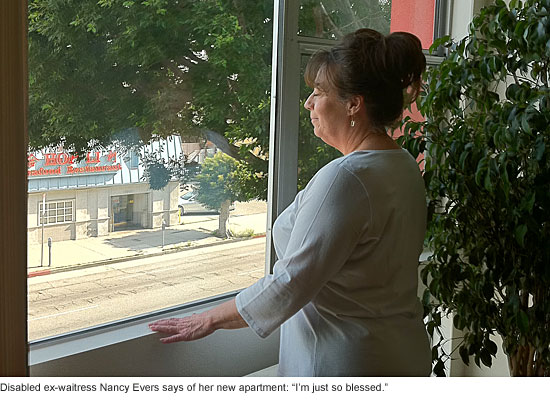 When Menorah Housing Foundation cut the ribbon this week on its bright new West Los Angeles senior housing project, Terri Tippit was thrilled.
When Menorah Housing Foundation cut the ribbon this week on its bright new West Los Angeles senior housing project, Terri Tippit was thrilled.
“That corner,” she says, “has been an eyesore for as long as I’ve lived here. And I’ve lived here for 37 years.”
Although the $10.9 million complex has been open for two months at Veteran Avenue and Pico Boulevard, this week marked its official grand opening. Restricted to tenants 62 and over with a maximum income of $29,000 for one-person households and $33,150 for couples, it brings 45 units of desperately needed low-income senior housing to one of the city’s priciest neighborhoods.
“We received 1,134 applications,” says foundation president Anne Friedrich, whose organization—a non-profit, non-sectarian offshoot of the Jewish Federation of Greater Los Angeles—operates 17 apartment buildings for low-income seniors throughout the county. “We held a public lottery.”
During the 1970s and 1980s, the building housed the Department of Public Social Services West Los Angeles Regional Office—a drab, beige, 37,597-square-foot welfare facility in an area of homes and apartments. All day, Tippit says, needy people would line up outside, waiting for caseworkers. Periodically, the office would reach capacity and close its doors, and the crowds would mill around the neighborhood, waiting for the building to reopen.
“It was all right at first, when it was mostly women and children,” says Tippit, who chairs the Westside Neighborhood Council and serves as president of the West of Westwood Homeowners Association. “But then it switched to more of a general relief, homeless population. There was a liquor store directly across the street—with a signal, yet—and, well, I won’t go into the gory details, but there were a lot of problems with the clients. They weren’t respectful of the community.”
Sympathetic though she was, she says, she and others pushed hard for the welfare offices to be moved to a more commercial sector. But when the move finally occurred, the now-vacant building presented new problems. Unoccupied for years, it became a magnet for weeds, graffiti and vagrants. “It wasn’t kept up,” she says. “You can’t have people sleeping in doorways.”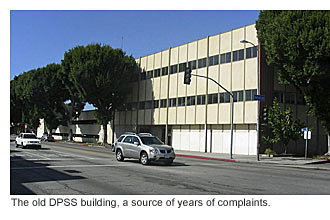
Finally, in 2009—and with city, county and federal assistance—Menorah Housing Foundation bought the property from Los Angeles County, razed the old offices and started construction on the new apartments. It wasn’t easy, says Lance Bocarsly, who chairs the foundation’s board. Because property values in Los Angeles are so high, low-income housing projects can be prohibitively expensive.
“Supervisor Yaroslavsky was absolutely instrumental in letting us pull this together,” says Bocarsly. “This would not have happened without him. He was the engine.” Which is why, he added, the new complex has been named the Zev Yaroslavsky Apartments.
Tippit says the neighbors are so happy that they’ve decided to be patient—for now—with an unexpected parking issue caused by the number of cars at the complex.
“Now that there’s a new building,” she says, “it’s a whole new environment.”
For the residents, the place is nothing less than a godsend. Clean and secure, with a bus stop out front, a diner next door and a shopping center a half-block walk away on a level sidewalk, the apartments rent on a sliding scale that averages about $240 a month. Friedrich says the average tenant is 71 and the average income is far below the eligibility requirement.
“I moved in here on my birthday, February 15, and it was the best present I’ve ever had in my life,” says 63-year-old Nancy Evers, a disabled ex-waitress who had been paying $785 a month for a room over a garage in Montrose when she heard she had won the right to lease her third-floor unit.
Evers said she had been trying for years to get into subsidized housing, only to be confronted with years-long waiting lists.
“I’m disabled and only get Social Security,” Evers says. “My rent only left me $50 a month to live on. I was living on bread. French toast, bread and butter, bread and bread. My doctor kept saying, ‘Nancy, what are you eating?’ But my daughter heard about Menorah Housing and said, ‘I think if you call, God is telling me it’ll be all right for you this time.’”
Evers was reluctant to get her hopes up.
“I’ve been working since the age of 13, when I got my first job peeling potatoes at a greasy spoon at Sixth and Bixel,” she says. “I never win anything. But I called and I got it. Now I have a one-bedroom apartment, and it’s so bright and sunny—full-sized fridge and stove, beautiful butter-yellow bedroom carpet. You could probably get four people in my shower. I’m just so blessed, and I think everyone in here feels the same way.”
A veterans residence worth waiting for
March 11, 2010
Steve Rosmarin pushed for 20 years to get a state long term care home for veterans built in West Los Angeles.
Now that it’s finally scheduled to open this summer, he’d love to be among the first to move in.
Rosmarin, a retired stockbroker and travel agent, is a very unretiring veterans’ activist. At 82, he’s twice been state commander of the Jewish War Veterans, once in the early 1960s and again in 2007-8. Since 1999, he’s served on the county’s Veterans Advisory Commission.
Not a bad achievement for a one-time private first class who served in Korea in the early days of the Cold War, hunting for Japanese holdouts and worrying about the Russians north of the 38th parallel. The slight teen carried a BAR, a Browning Automatic Rifle, a powerful weapon that weighed more than 18 pounds. “They liked to give the short guys the big weapons,” he explains.
As a veterans’ advocate, he has long pushed for advances in education, health care and housing for former military personnel in the Los Angeles area. The housing issue became important to him as he watched as veterans of World War II, Korea and, more recently, Vietnam hit retirement age, and face scarce housing options on fixed incomes.
“We have so many veterans here that are aged and in need of housing and care,” he says. “We needed to do something.”
In the late ‘80s, Rosmarin and other advocates figured the best solution was building a state veterans home in L.A, now home to about 400,000 vets. At the time, there was just one state retirement residence for vets operated by the California Department of Veterans Affairs, a large home in the Napa Valley community of Yountville – hundreds of miles away. In the ‘90s, two new state homes were built, but neither was close to Los Angeles, with its large veteran population.
He lobbied members of Congress, veterans’ officials and Sacramento lawmakers to locate a facility on the federal Veterans Affairs campus in Westwood. The area had spare land and proximity to the veterans hospital and the UCLA Medical Center. And, after all, the VA campus had started in the 1880s as the Sawtelle Veterans Home for disabled military men. Locating a facility there meant the vets could more easily stay connected to family and friends.
Their campaign got a big boost when federal Veterans Affairs officials declared California one of two states “in great need” for veterans’ housing and required new homes to be built in areas with high concentrations of veterans. The state passed bond funding between 2000 and 2004, and a building plan emerged to construct five new state homes with both state and federal funds—three of them in Los Angeles and Ventura counties.
Rosmarin’s key role was evident at the 2007 groundbreaking, when he got the call to introduce Gov. Arnold Schwarzenegger.
The 396-bed Veterans Home of California–West Los Angeles facility will open this summer. The $187- million home will include a residential care wing as well a skilled nursing facility and a “memory care unit” for vets with Alzheimer’s or dementia. Two other smaller Southern California facilities–60-unit residences in Lancaster and Ventura–also opened in recent months.
When the application period began last month for the West L.A. home, Rosmarin, who until recently had been living on his own in the San Fernando Valley, quickly put himself in the running. He wants to be closer to his two daughters and his L.A.-area roots in Sherman Oaks and West Hollywood. He moved into the new state veterans’ home in Lancaster in the past few weeks—temporarily, he hopes. Widowed three years ago, Rosmarin had wanted to wait until the West L.A. facility opened to make the move, but he had to make the jump early when his doctor recently told him that his health and medication issues meant that he should no longer be living alone.
He’s not the only one interested. More than 700 veterans have requested applications to the West L.A. facility, according to spokeswoman Jeanne Bonfilio. Veterans must be California residents, 62 or older and honorably discharged. Disabled vets can be younger. The rent covers room, board and all services. Rates vary, ranging from 55 to 70 % of a veteran’s income, depending on the level of care in the facility.
After getting a taste of living in a state home, Rosmarin is an even bigger booster, touting them as clean, well-operated alternatives to costly private sector facilities. “I’ve visited several [private facilities], and you always get the smell of hospitals and the smell of other things,” he says, speaking by phone from what he hopes will be his temporary bivouac in Lancaster. “Here it smells spotless. It’s a great thing to see.”
In WeHo, a new home and new hope
February 10, 2010
After living with a succession of friends and relatives for more than three years, no wonder Michael Wojtkielewicz gets passionate when he talks about landing an apartment of his own.
“It’s going to mean everything to me,” he says. “There is a huge security knowing you have a home. It’s yours today and it will be yours tomorrow.”
At age 47, the retired architect is preparing to move later this month into the Sierra Bonita Apartments in West Hollywood, an innovative 42-unit mixed-use project on Santa Monica Boulevard for low-income disabled residents like Wojtkielewicz. With his schnauzer named Psquared, Wojtkielewicz aims to turn his new place into the first stable home he’s had since losing his job and apartment several years ago after he was leveled by the onset of stress-related immune illness and bipolar disorder.
The West Hollywood Community Housing Corporation project, which is still under construction, will be home to residents with physical and mental disabilities, along with those who suffer such chronic illnesses as diabetes and HIV/AIDS, says Executive Director Robin Conerly. WHCHC and another non-profit will take up shop in the building’s street-level commercial space.
Residents will move in starting in mid-February. Their rents will be fixed at two amounts, based on a tenant’s income. Those who make 30 percent or less of the county’s median income as calculated by federal housing officials (about $48,000) will pay $382 per month; the cost will be $531 for residents with incomes up to 40 percent of the county median. The one bedroom units can accommodate single tenants, couples and families with one child.
Wojtkielewicz, who’ll live on the fifth floor—the top floor—knows he was “really, really lucky” to get one of the apartments. He was one of 2,017 applicants. His name came up No. 11 in a September lottery.
Wojtkielewicz is hoping that his good fortune is a sign that his life is turning around after a run of painful years.
Wojtkielewicz had been a residential and commercial architect at a series of L.A.-area firms for 20 years when he was stricken with a stress-related immune disorder in 2005. The illness caused painful staph infections on his chest, arms and legs. Separately, he was diagnosed with bipolar disorder.
Around the same time, he lost his job when clients dried up at the two-man design firm, where he’d been working as a contract architect.
In pain and “mentally pretty much shattered,” Wojtkielewicz says he couldn’t bring himself to look for another job. Low on savings, he gave up his apartment of 16 years and moved to a friend’s place in 2006. “When you can’t work,” he said, “you’re no longer able to pay rent.”
He shifted between homes in Los Angeles and West Hollywood, and also took up residence with family members in Pennsylvania. For the last year, Wojtkielewicz has lived with a sick friend in Silver Lake, acting as his caretaker.
Things began looking up last winter when the friend told Wojtkielewicz he’d seen the Sierra Bonita construction site and learned it was reserved for low-income disabled people. The two hopped on a bus to have a look. Wojtkielewicz liked what he saw and signed up for the lottery. By then, he’d qualified for a federal Supplemental Security Income disability payment of $1,335 a month.
With his architectural training, Wojtkielewicz is excited about living in the stylish new building with floor-to-ceiling windows and a rooftop garden. Designed by architect Patrick Tighe, the $20.7 million project uses such state-of-the-art green-building features as interior courtyards that circulate cool air, high-efficiency air conditioning and artistic grids of solar panels on the roof and exterior walls. Its development became a pilot project for West Hollywood’s 2007 green building ordinance.
Among the projects funders are the city of West Hollywood, which put up $6.5 million, and Los Angeles County, which supplied a combined $14 million in loans and bonding authority through the Community Development Commission.
To make sure residents get the help they need, a services coordinator from Jewish Family Service will work at the building. The L.A. Gay & Lesbian Center and AIDS Project LA plan to provide HIV/AIDS care and other services.
Now Wojtkielewicz says he wants to give back a bit of what he’s been given. So he plans on volunteering for a social services agency. He says he also wants to reconnect with friends that he’s lost touch with since his troubles began. “I think having [my own place] is going to make me want to participate in new activities,” he says confidently.
Maybe that’s why he sent a note of gratitude to Lee Meyers, WHCHC’s director of residential services. In it, he quoted a tagline from an IKEA ad he remembered fondly that now rings with a special resonance for him: “Home – The Most Important Place in the World.”
A new roof for homeless kids and their parents
October 30, 2009
A rundown budget motel in Culver City is being transformed into an oasis for homeless families, a place where they can find emergency housing and comprehensive services designed to stabilize and restore their lives. Set to open in late January, 2010, the Family Shelter, operated by the Santa Monica-based Upward Bound House, will become the first emergency family shelter on the Westside in at least a decade.
“We are filling a real need,” says Upward Bound House Executive Director David Snow.
The $4 million transformation of the former Sunbay Motel on Washington Boulevard will allow it to house as many as 72 homeless adults and kids – an estimated 210 children and their parents each year. Families may come from anywhere in Los Angeles County and remain for up to three months, until they’ve secured permanent housing or moved into a transitional apartment while awaiting a permanent residence.
 Keeping families together during the 90-day transition is the shelter’s goal. “Our entire model is keeping families intact, so each family will have its own unit” housing up to four people, Snow says. He anticipates that most clients will be single-parent families with one, two or three children. The new facility also will feature an on-site playground and a computer lab for kids.
Keeping families together during the 90-day transition is the shelter’s goal. “Our entire model is keeping families intact, so each family will have its own unit” housing up to four people, Snow says. He anticipates that most clients will be single-parent families with one, two or three children. The new facility also will feature an on-site playground and a computer lab for kids.
Beyond safe living spaces, the Upward Bound House Family Shelter will provide comprehensive homeless services, including what Snow calls “wraparound case management” intended to teach adult skills, such as household budgeting, that will help residents succeed on their own.
Families will get two daily meals in a new multi-purpose room, thanks to pledged donations of leftover food from Second Helpings and Google. Youngsters will be enrolled in Culver City or LAUSD schools to ensure continuity.
The Sunbay cost $3 million to acquire, with another $1 million for renovations that will give the facility a contemporary, energy-efficient look, says Jay Vanos, principal at Jay Vanos Architects, which designed the new facility. Vanos’s team is using sustainable materials, is saving cooling costs by blocking excessive sunlight with “eyebrows” over windows and is replacing the old pink and white color scheme with “a warm grey to maintain a quiet low profile” in the neighborhood.
Funding flowed from a variety of sources, a reflection that several cities will benefit from the new facility. Supervisor Zev Yaroslavsky provided $750,000 in Third District funds as seed money. That amount was matched by then-Supervisor Yvonne B. Burke of the Second District, which includes Culver City. The cities of Los Angeles, Santa Monica and Beverly Hills also made contributions.




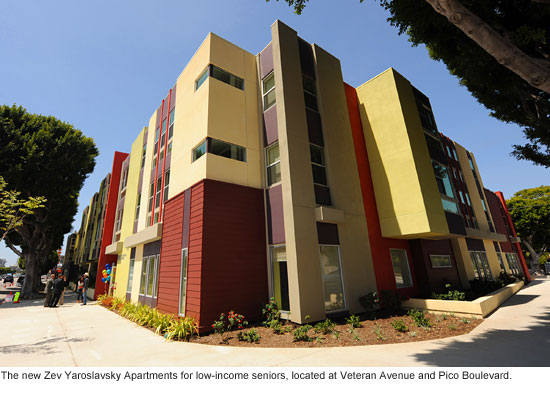
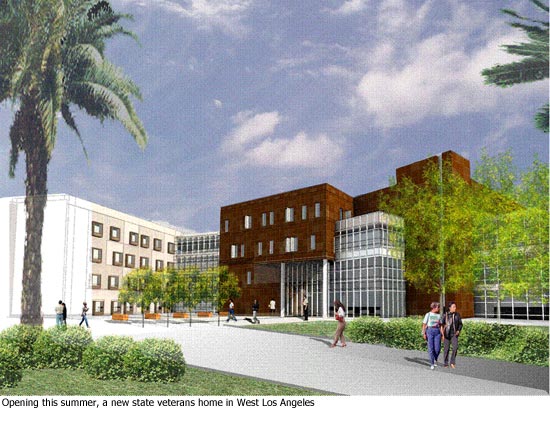
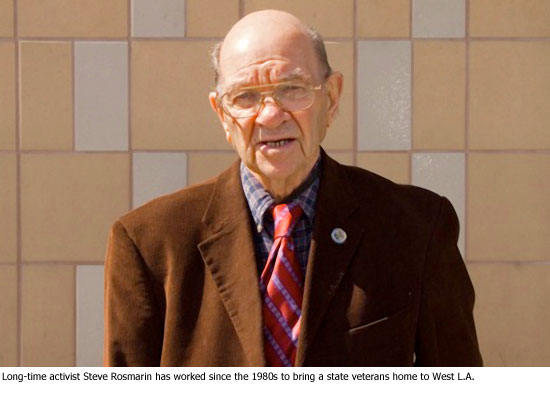
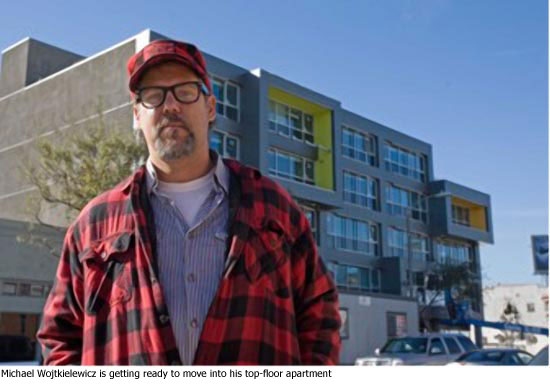
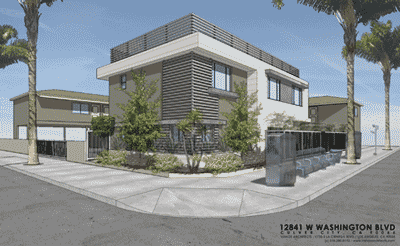







 405 bridge work causes a stink
405 bridge work causes a stink

